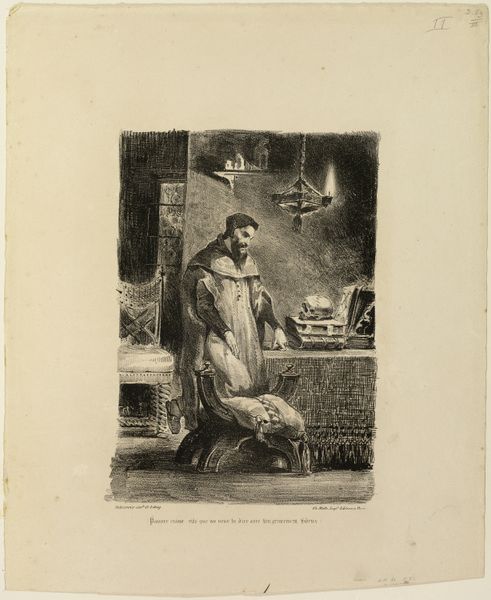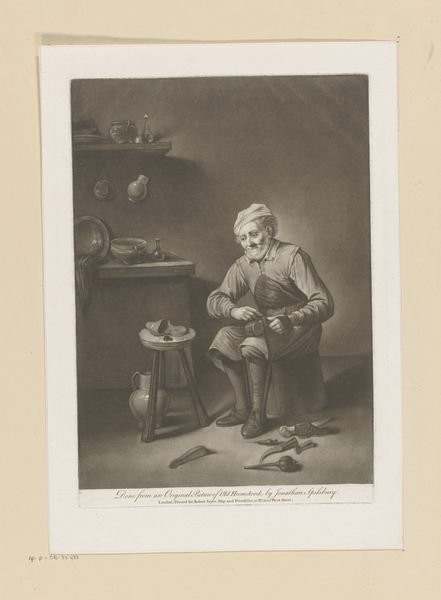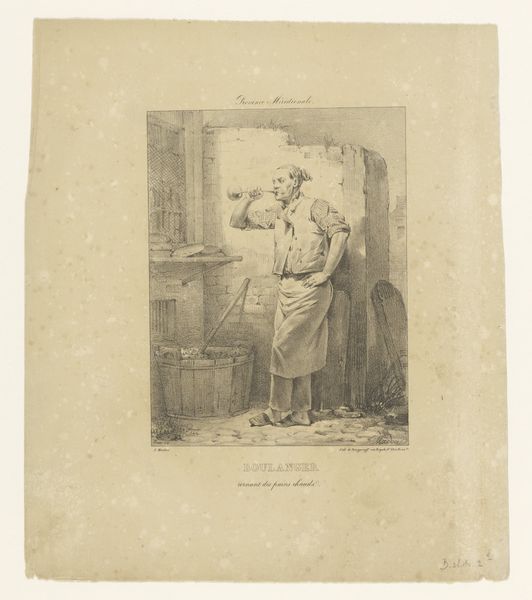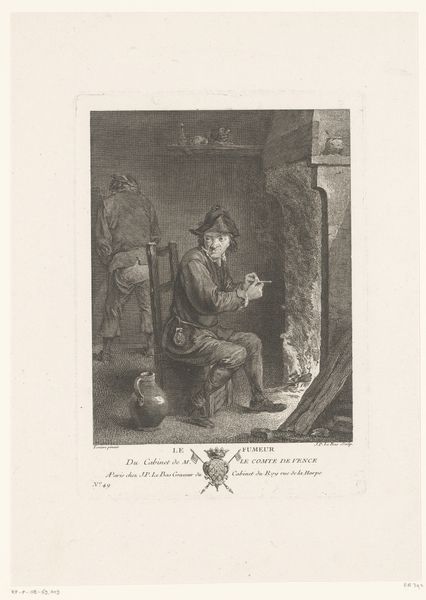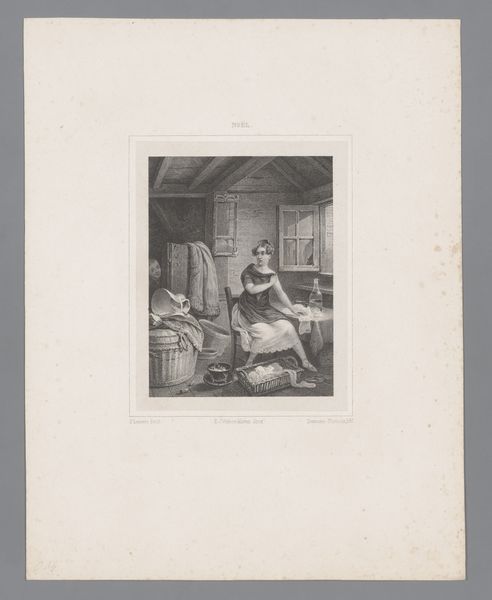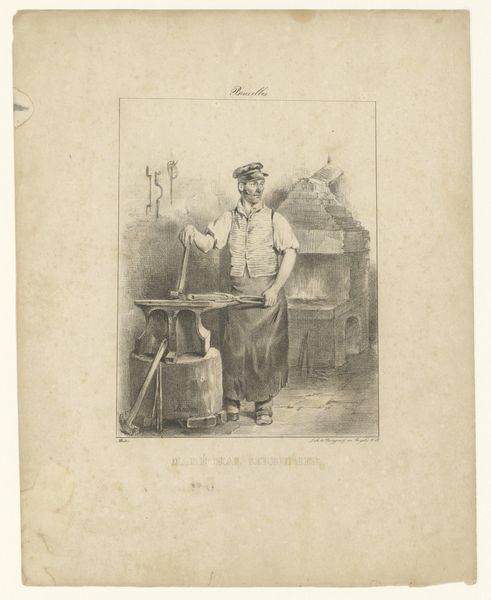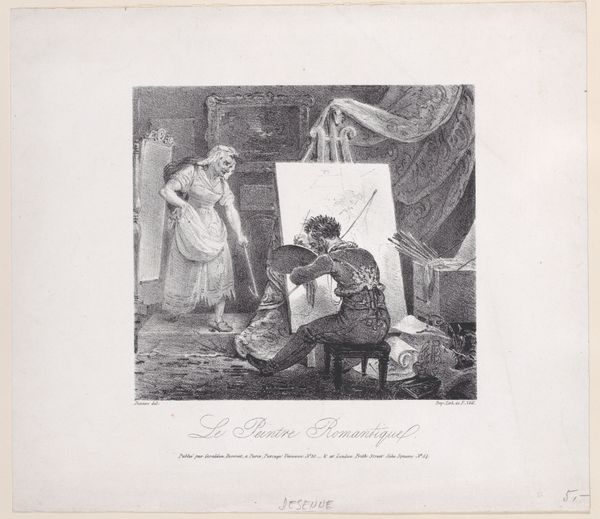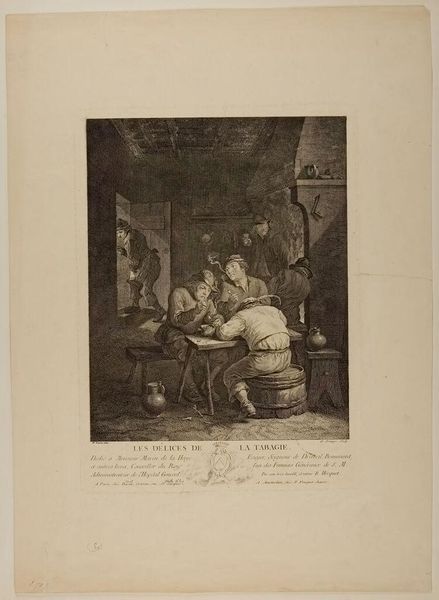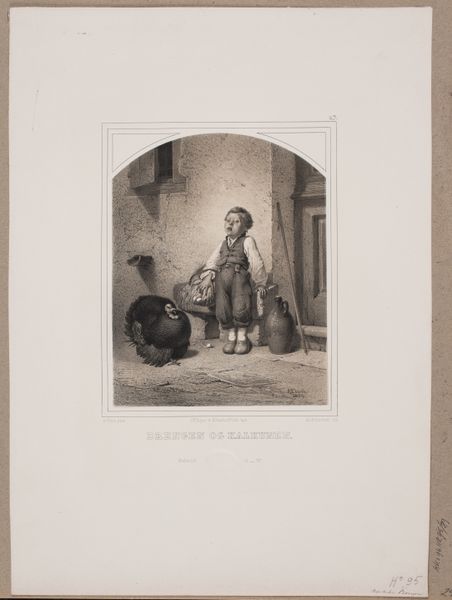
drawing, lithograph, print, paper
#
portrait
#
drawing
#
lithograph
# print
#
paper
#
genre-painting
#
remaining negative space
#
realism
Dimensions: 551 mm (height) x 359 mm (width) (bladmaal)
Editor: This is "Den lille Savoyards Toilette," a lithograph drawing on paper. It looks like it was created between 1853 and 1873. I’m struck by the kind of… grimy realism of the scene. How do you interpret this work, especially considering its historical context? Curator: This print provides an intimate glimpse into the lives of itinerant workers, Savoyards, who were often children exploited for labor in 19th-century Europe. How do you think its public image impacted the perception, perhaps, of this sub-group? Editor: It seems pretty unsentimental, or maybe the sentiment is undercut by how ragged the child looks. Almost documentary, like a photograph. It invites the viewer to really consider what the Savoyard's existence was like. Did that influence public opinion or even policy about child labor? Curator: That's a crucial question! The piece participates in a wider visual discourse surrounding poverty and child labor. Its circulation as a print made it accessible, furthering debate among the growing middle class on social reforms. Realism was employed as a tool for engaging social issues by representing individuals stripped bare, which hopefully triggered action by society. Editor: That’s interesting - so this kind of art could really play a role in affecting social change. I always thought art was just…pretty, but that connection is really powerful. Curator: Precisely. Prints like these, while seemingly just "portraits," were in dialogue with social movements, legislation, and evolving ideas of childhood and labor. These kinds of artworks highlight the power of art as an influential cultural agent. Editor: It really gives me something to think about when looking at art from this era. It seems important to try to dig beneath the surface for those connections! Curator: Exactly. Analyzing artworks through their historical and social circumstances offers a depth of understanding otherwise missed.
Comments
No comments
Be the first to comment and join the conversation on the ultimate creative platform.
